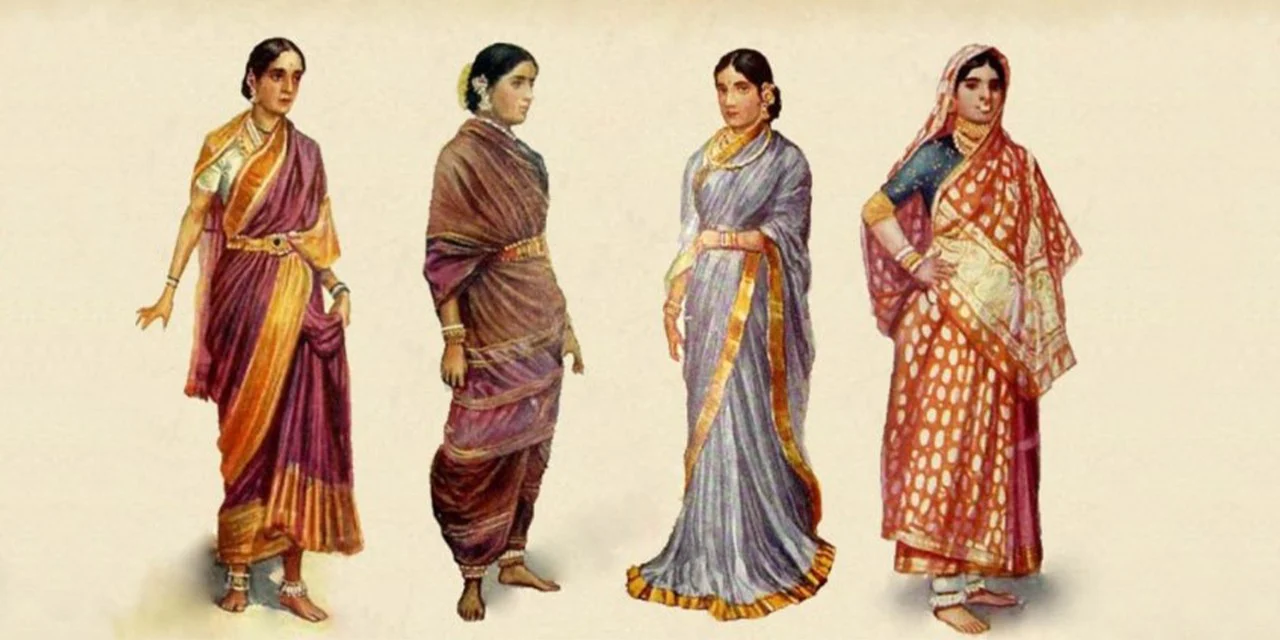The Cultural Relevance of Sari: A Timeless Indian Attire

The sari is more than just a piece of cloth; it is a symbol of India’s rich cultural heritage and a reflection of its diverse traditions. For centuries, the sari has remained an integral part of Indian women’s wardrobe, transcending generations and modern fashion trends. Its versatility, elegance, and deep-rooted cultural significance make it a timeless attire that continues to hold a special place in Indian society and fashion.
The Origins and Evolution of the Sari
The history of the sari dates back over 5,000 years, with its origins tracing to ancient Indian civilizations. Early depictions of the sari can be found in sculptures and murals from the Indus Valley Civilization, where women were often shown wearing unstitched lengths of cloth. The word ‘sari’ itself is derived from the Sanskrit word “sati” meaning a strip of cloth, which perfectly describes the garment’s basic structure.
Over time, the sari evolved in style, draping techniques, and fabric choices, influenced by various regional, cultural, and royal preferences. Different regions of India developed unique styles of draping the sari, and the fabric choices varied from cotton and silk to more contemporary materials like georgette and chiffon. While the basic form of the sari remained consistent, the adornments, embellishments, and style of wearing it varied based on local customs and traditions.
Sari as a Symbol of Tradition and Elegance
For centuries, the sari has been associated with femininity, elegance, and modesty. It is often worn on auspicious occasions such as weddings, festivals, and religious ceremonies, where the drape and style of the sari reflect the occasion’s formality. The rich textures, intricate embroidery, and bright colors of a sari are seen as symbols of celebration, grace, and cultural pride.
The sari is also a symbol of cultural continuity. Despite the rise of Western fashion and modern clothing styles, the sari has managed to retain its position as a national garment, often worn proudly by women of all ages. In many ways, wearing a sari is a statement of cultural identity, linking generations through a common heritage. It is a garment that celebrates the diversity of India’s traditions while uniting the country through its timeless appeal.
The Role of Sari in Indian Festivals and Celebrations
Throughout India, the sari is an essential part of religious and cultural celebrations. During festivals such as Diwali, Durga Puja, Onam, and Pongal, women wear beautifully embellished saris, often in vibrant colors like red, gold, and green, symbolizing prosperity, fertility, and auspiciousness. The intricate designs and rich fabrics of these saris are not just for aesthetic pleasure but also carry cultural meanings, representing divine blessings and good fortune.
One of the most significant occasions for wearing a sari is during weddings. The bridal sari, often a richly decorated garment in silk, brocade, or satin, is central to Indian wedding traditions. Brides wear elaborate saris, often with heavy embroidery and gold thread work, as a sign of status, wealth, and the beginning of a new life. In many regions, the bridal sari is passed down through generations, becoming an heirloom that symbolizes continuity, family bonds, and cultural values.
The Sari as a Contemporary Fashion Statement
In modern India, the sari continues to be worn not only for traditional events but also as a fashion statement. Designers have embraced the sari, giving it a contemporary twist with innovative fabrics, cuts, and draping styles. The sari has found its place on international runways, worn by celebrities and fashion icons, and is increasingly being incorporated into global fashion trends. In addition, younger generations are finding new ways to style the sari, blending tradition with modern influences to create unique looks.
The fusion of the sari with Western clothing elements, such as pairing it with a jacket, crop top, or even a belt, has contributed to its continued popularity. The modern sari is now seen as both practical and fashionable, suitable for various occasions from formal office wear to evening events, while still maintaining its deep-rooted cultural symbolism.
The Role of Sari in Promoting Indian Textiles and Craftsmanship
The sari also plays an important role in promoting India’s rich textile heritage. Each region of India has its unique sari weaving traditions, such as Banarasi silk from Varanasi, Kanjeevaram silk from Tamil Nadu, Bandhani from Gujarat, and the Chanderi weave from Madhya Pradesh. These traditional weavings are often done by skilled artisans who use intricate techniques passed down through generations, and each sari reflects the craftsmanship of the region it originates from.
The sari’s popularity has helped sustain these industries, providing livelihoods to countless weavers and artisans. The increasing demand for handwoven saris, particularly those made from natural fibers like cotton and silk, has led to a revival of traditional weaving practices and an emphasis on sustainable fashion. The sari thus plays a dual role in preserving India’s textile heritage while promoting economic growth and supporting local artisans.
Conclusion
The sari is much more than a traditional garment; it is a symbol of India’s cultural richness, history, and the enduring legacy of its textile and craft traditions. As both a timeless and versatile attire, the sari continues to evolve, blending the old with the new, and maintaining its significance in Indian society. Whether worn during a religious ceremony, a wedding, or as a fashion-forward statement, the sari remains a powerful cultural symbol, connecting generations and reinforcing a shared identity that celebrates the elegance and grace of Indian women. Its continued relevance in modern-day India highlights its enduring appeal, cementing its place as one of the world’s most iconic garments.










